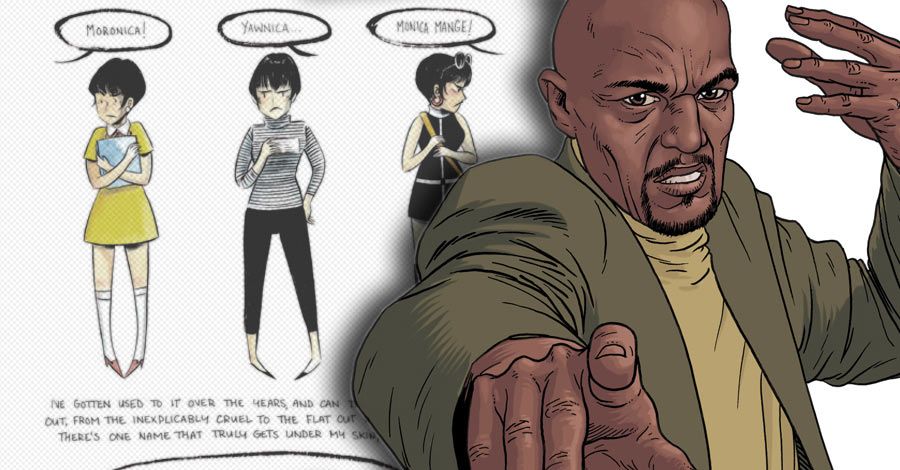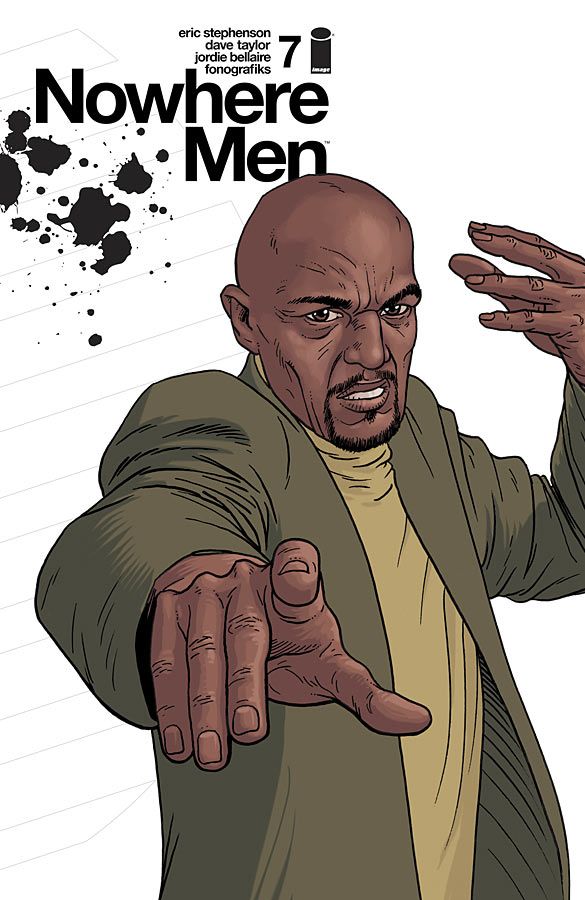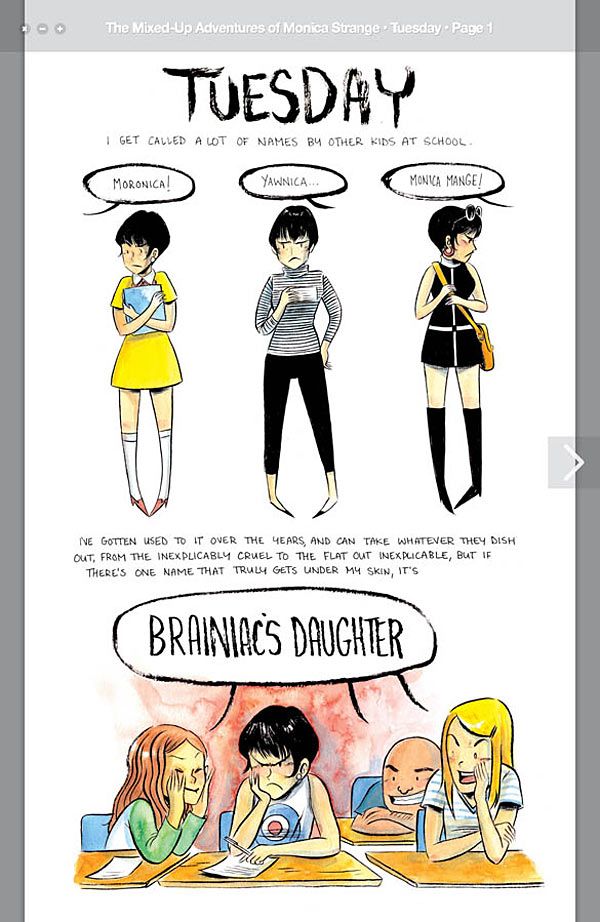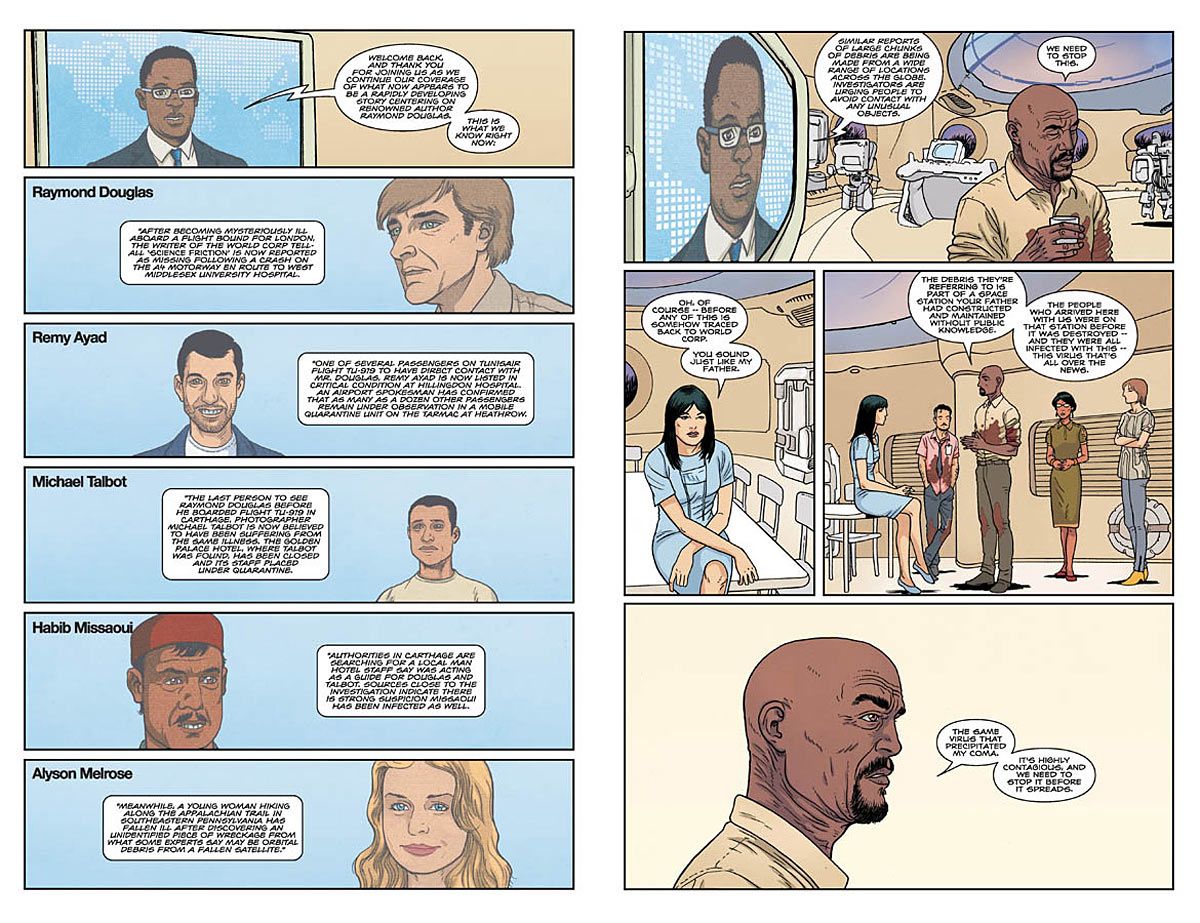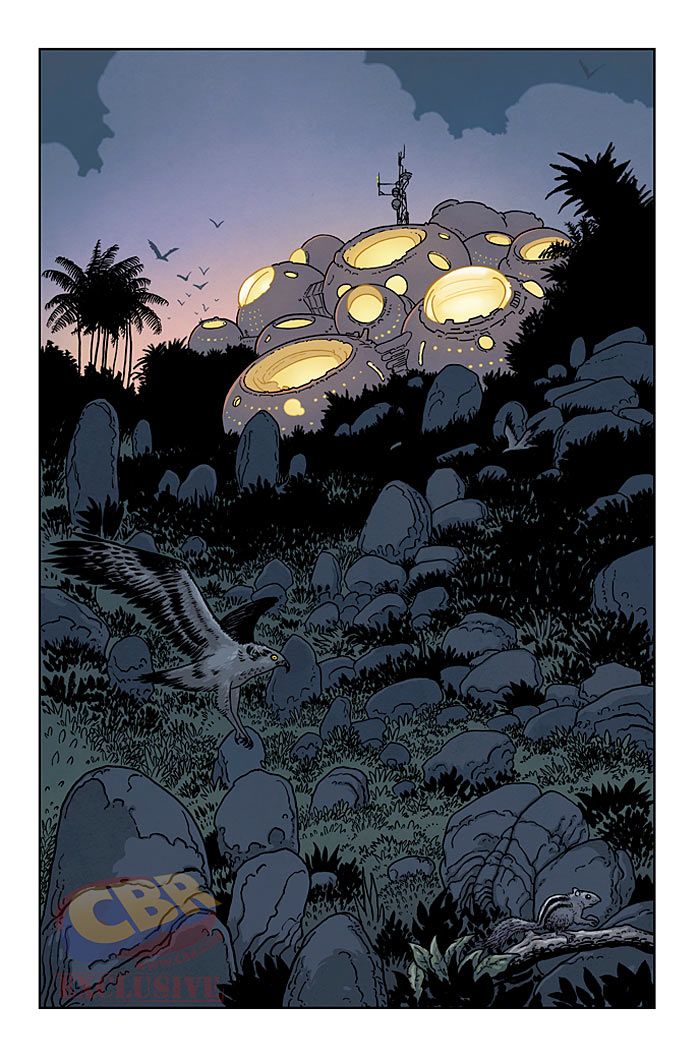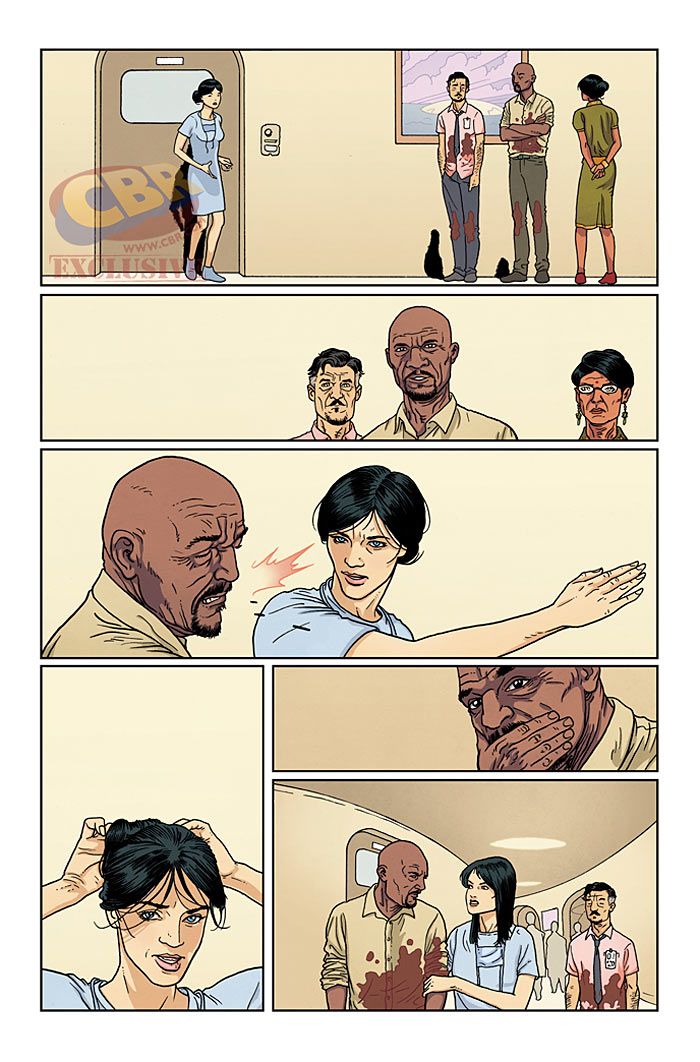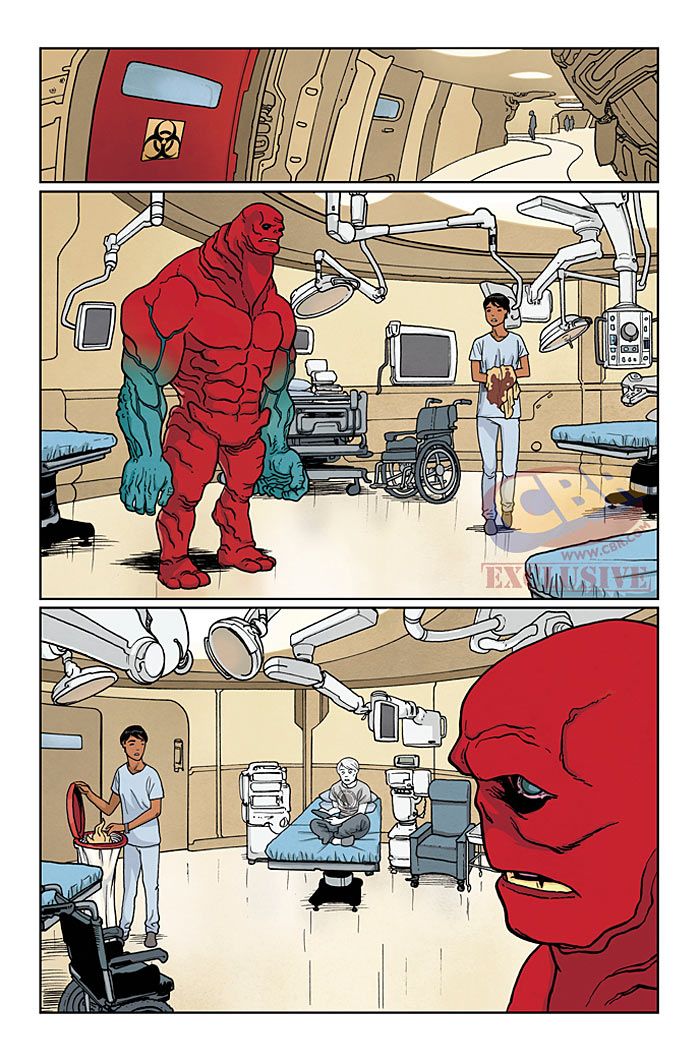Back in 2012, Image Comics publisher and writer Eric Stephenson introduced the new "Fab Four," a group of scientists whose unlikely partnership started a technological and cultural revolution. Today, after more than a two-year hiatus, Stephenson is returning to the world of "Nowhere Men" and readers gripped by the book's mysteries will no doubt be eager to learn what's next for the founders (and victims) of World Corp.
RELATED: CCI: Stephenson Gets Lost With "Nowhere Men"
The first arc of "Nowhere Men" followed four scientists who changed the world starting in the 1960s and showed the dissolution of their partnership -- and sanities -- in the present. Readers also met another group of researchers operating a set of secret World Corp.-backed experiments on the decommissioned International Space Station. A mysterious alien infection on board the station triggered a series of horrific transformations, and when it was clear the researchers were going to be abandoned to their fate, they made a desperate attempt to teleport back to Earth. Now reunited, they've developed amazing powers. The only catch is they might be in even more trouble than before. And what does all of this have to do with the brilliant and missing Thomas Walker, whose drug-fueled cosmic explorations initially tore World Corp. apart?
With today's "Nowhere Men" #7 marking the start of a brand new arc and introducing new artists Dave Taylor and Emi Lenox to the series, CBR News caught up with Eric Stephenson to preview what's ahead, reintroduce his cast of scientific geniuses, and delve deeper into the real world analogues of his fictional "Fab Four."
CBR News: What are you most looking forward to with returning to the "Nowhere Men?" How do maintain motivation and inspiration during breaks from the series?
Eric Stephenson: Most of all, I'm just looking forward to having it out there again. It wasn't until I'd been doing "They're Not Like Us" for a while that I realized how much I missed working on the book -- the world, the characters. I think any writer will tell you that every story is different, and that it's almost like entering another world when you're writing different things, but I'm very proud of what Nate [Bellegarde, the book's original artist] and I created and at a certain point, there was a very strong pull to get back to it. It's obviously been a difficult few years, and I wasn't sure it was going to happen, honestly. There were lots of kind words from fans and other creators, though -- and Jordie [Bellaire] in particular was so great along the way, a really good ear and very supportive -- and ultimately, that's what kept me going.
How did Dave Taylor come to join the team, and how is his style inspiring you to approach "Nowhere Men" differently?
Basically, Dave was a fan of what Nate and I had started with the book and when he learned we were kind of at a standstill, he offered up his services. I'd love Dave's art from the first time I saw it, back in the '90s when he was doing "Tongue Lash" at Dark Horse, and while his work isn't really like Nate's on a surface level, he has a similar approach and the same eye for detail. I'm really excited to see how he develops as we go along, and how our collaboration impacts the overall plan for the book. Issue #7 was already written before Dave came on board and #8 was more or less completely mapped out, but now that we're up and running, I'm sure certain things are going to change a bit since I'm writing for Dave as opposed to Nate.
In the backstory of World Corp, it's suggested that what made the Fab Four so interesting was their differences. What are the differences between you and your creative team, and what kind of exciting friction is that creating?
Hmm, I don't know how exciting it is, but I do think we all have different work styles. I'm a bit more scattershot in how I do things, which probably drives the more structure-oriented Jordie and Steven [Finch, AKA Fonografiks] crazy. And probably Dave, too, even though if you were to divide us into two camps, Jordie and Steven would be on one side, and Dave and I on the other.
What was it about The Beatles and the spirit of '60s and '70s rock 'n' roll that was important to bring to these four scientists at the core of your story?
"Spirit" is exactly the right word there, I think, because it really is a question of capturing that same spirit. Everything was so new back then. You can look at The Beatles and that whole period in the early to mid-'60s and there's like a line of demarcation between black and white and technicolor, you know? The world became a different place over the course of a few years in the '60s, and that's the same feeling I wanted to evoke here. The whole notion of the World Corp founders as the "Fab Four of Science" is that they had as profound an effect on the world, on our culture, as The Beatles did in real life.
You've created a world where scientists are super-celebrities -- do you think scientists and the media should be doing more to raise the profile of science in our world? Who do you think are the scientific icons are today?
Well, it's not just about science, really, but the notion that our we're all a little too focused on things people and things that don't matter in the big scheme of things. There are people who are legitimately famous for the accomplishments, and then there are celebrities. You look at Steve Jobs or Bill Gates or Stephen Hawking -- they've made the world a better place. Kim Kardashian? Not so much. When I was a kid, I remember watching Carl Sagan on the original "Cosmos," and that had a huge impact on me. There's an updated version of that show with Neil deGrasse Tyson, but as well-known as he is, I think it gets overlooked amidst the never-ending stream of white noise the media takes favor with these days, and that's kind of what got me on this whole kick to begin with. It would be a better world if we spent a little more time listening and learning instead of simply sating our desire for non-stop entertainment.
SDCC: Eric Stephenson Talks Image Comics, Creator-Owned & Creative Inspirations
The first arc was focused on build up and backstory -- what kind of conflicts can readers expect in this new arc?
We're mainly going to be dealing what happens to the survivors of the space station and how their existence impacts the rest of the world. We'll also be delving into what the World Corp. partnership means now that Dade Ellis is at the helm again, and what direction the company will take in the future.
Is the format changing for the next arc, or will you still include the graphic ads, essays, and various transmedia artifacts?
It's more or less the same in terms of overall format, although we're going to be doing some different types of things as we go along.
Emi Lenox is also joining the team, creating a diary from Emerson Strange's daughter. How did Emi become part of the project and does this mean we'll finally meet Emerson's gifted child?
We will, yes. Monica Strange becomes a full member of our cast with issue #7, but we'll be getting a glimpse into her childhood through her online sketch diary. Emi seemed like the perfect choice for that, because she's been doing sketch diary comics herself for years with "Emitown." I've been a fan of Emi's work since Jamie Rich and Joe Keatinge turned me on to her minicomics several years back, and she just gets better all the time.
How do you balance you responsibilities as Publisher of Image Comics and as a creator?
It's actually not as hard as it probably seems. As many creators know, when you're first breaking in to comics, you're balancing your pitches and comics work with your day job, and this really isn't that much different. I have a job I come to every day, and things like "Nowhere Men" and "They're Not Like Us" are tended to in my time off. I generally walk to and from work, so I think about whatever I'm writing at the time during those walks. That said, I think these two books are kind of the limit on what I'd be able to handle.
"Nowhere Men" #7 is on sale now.

